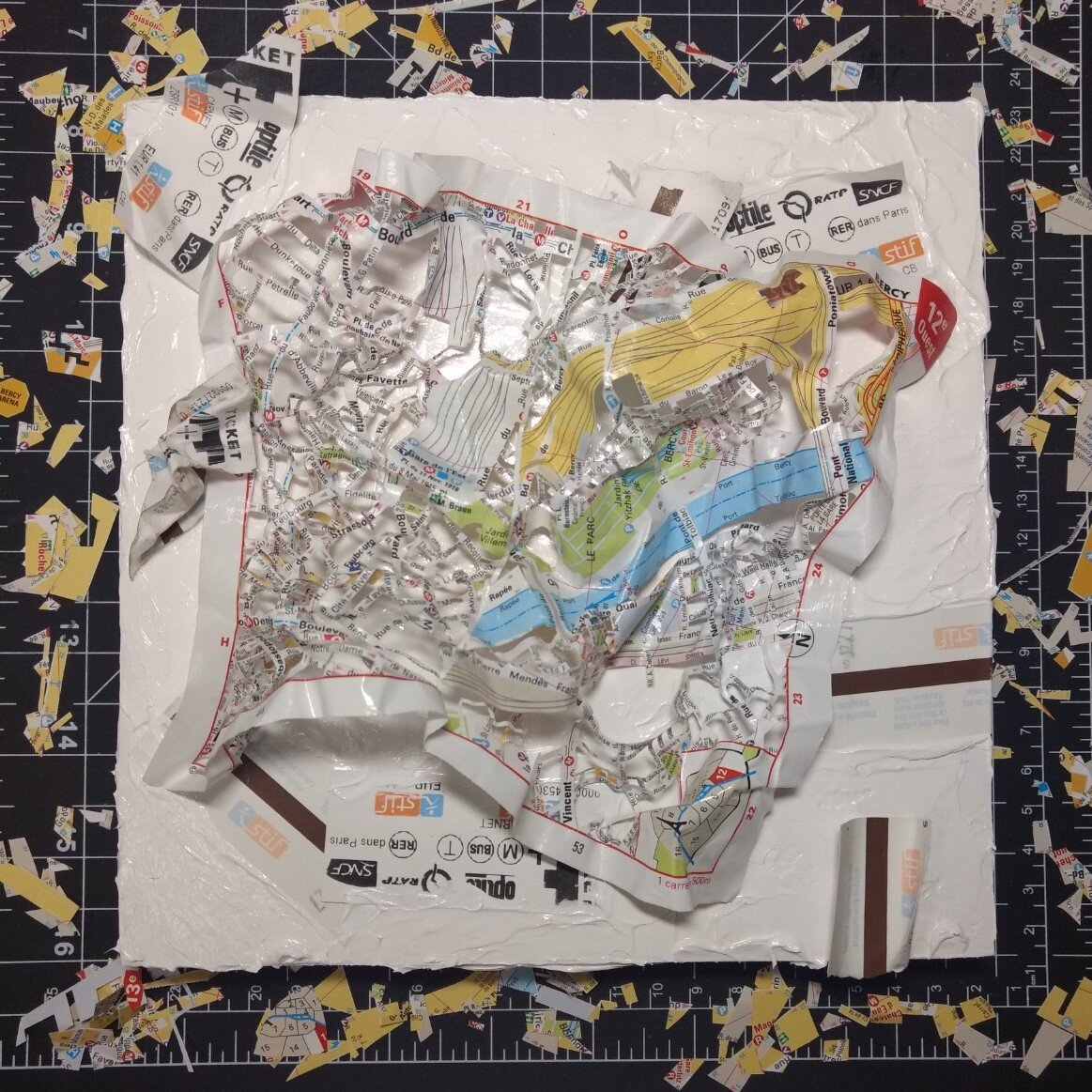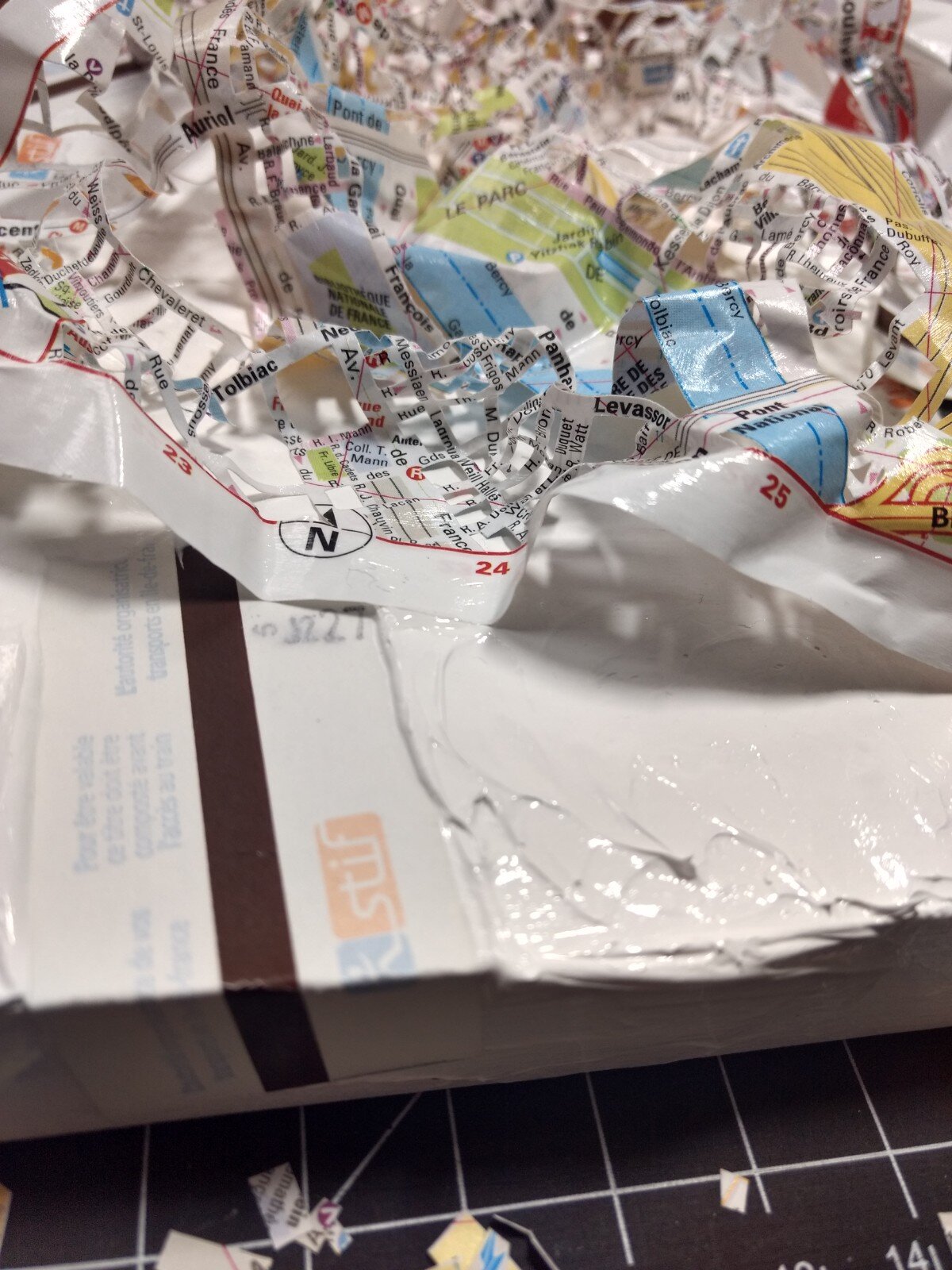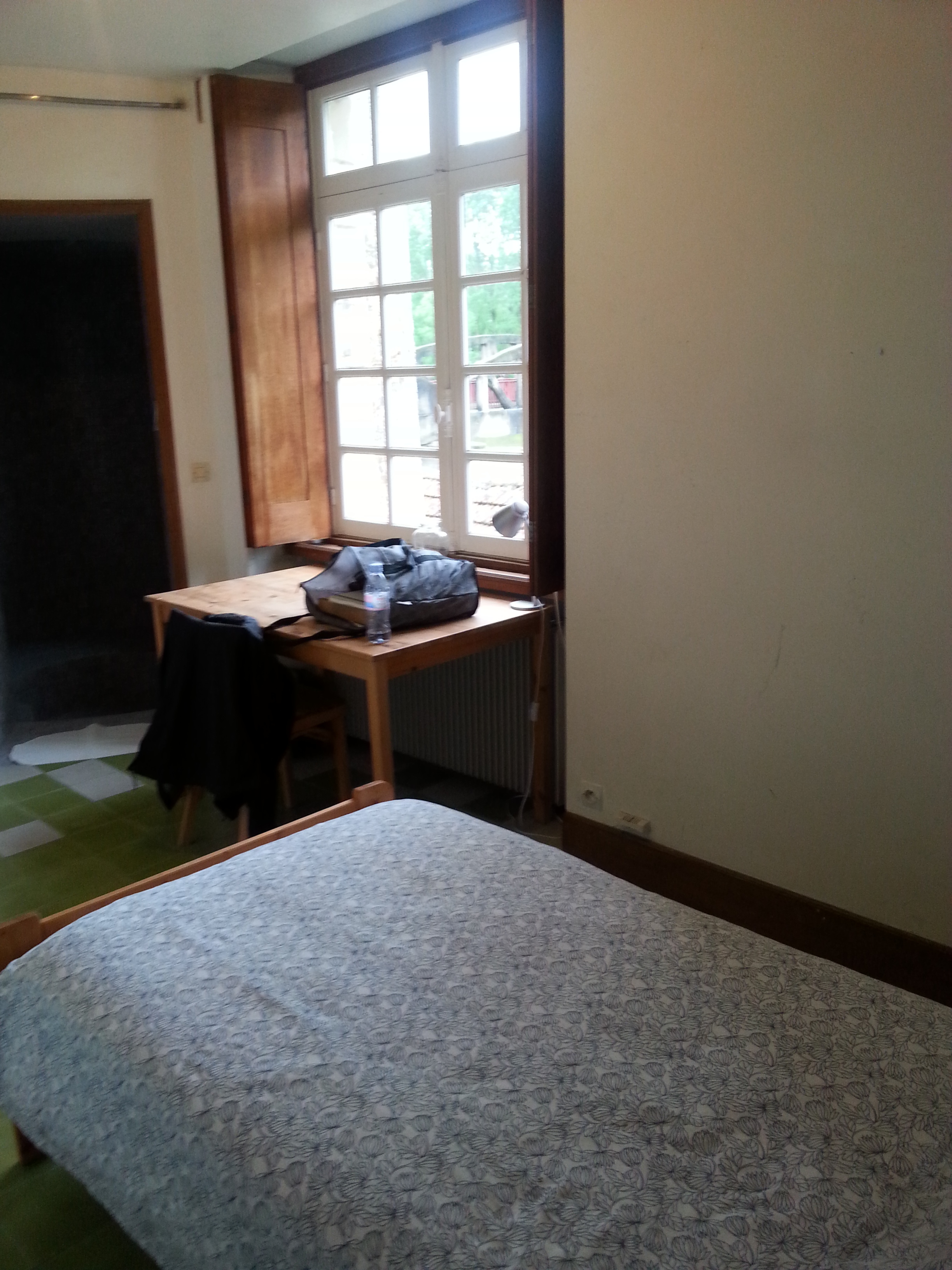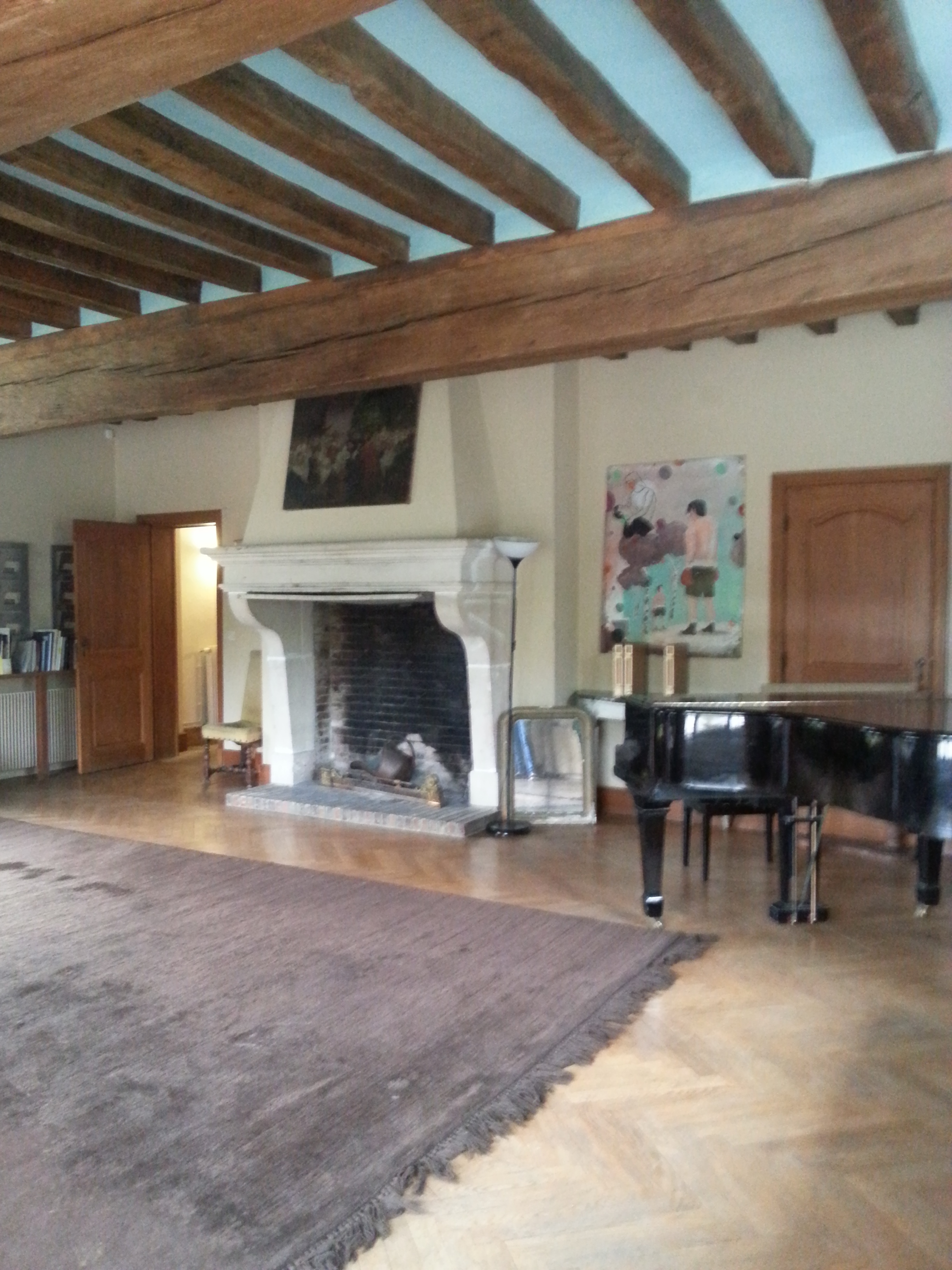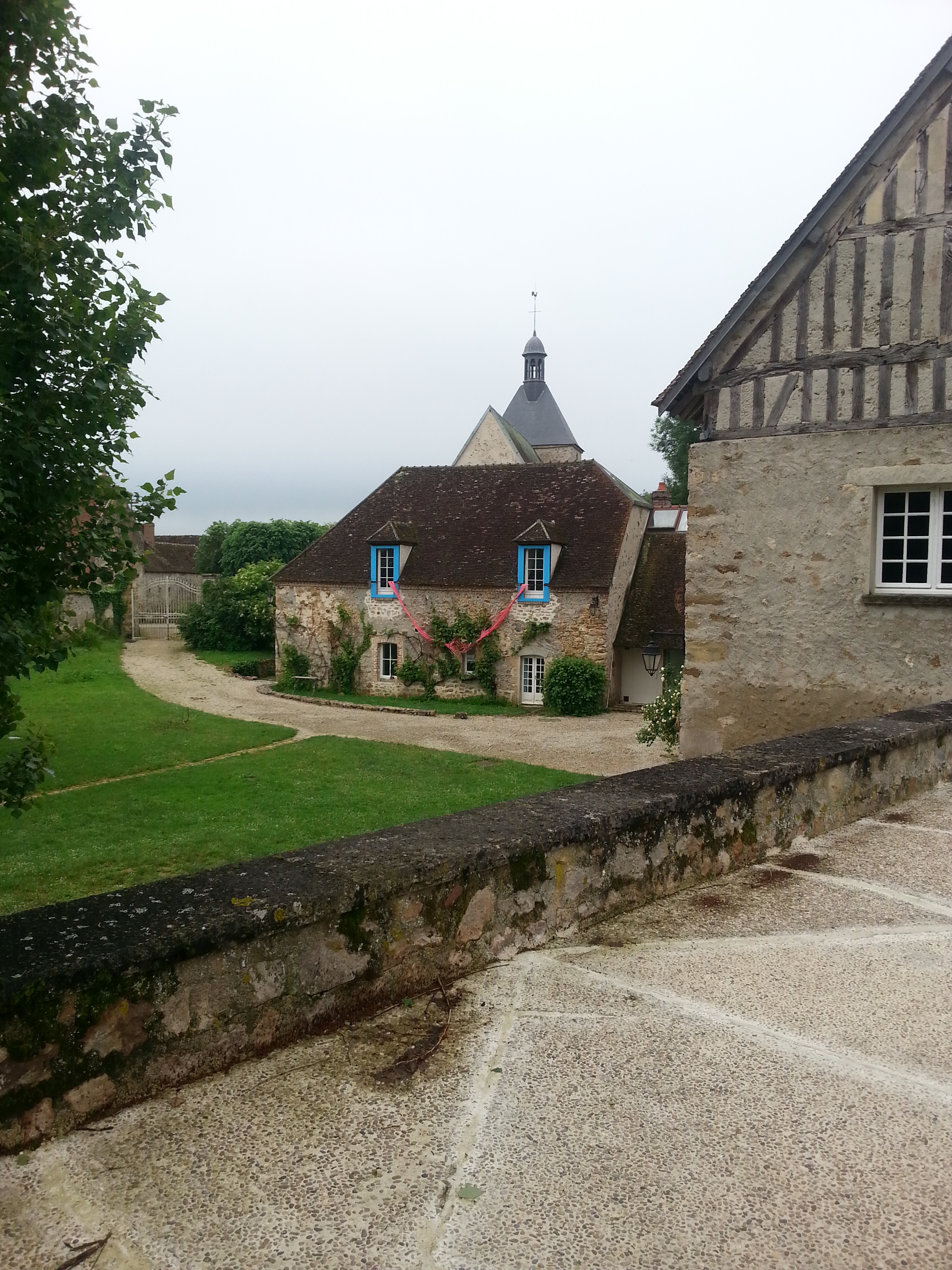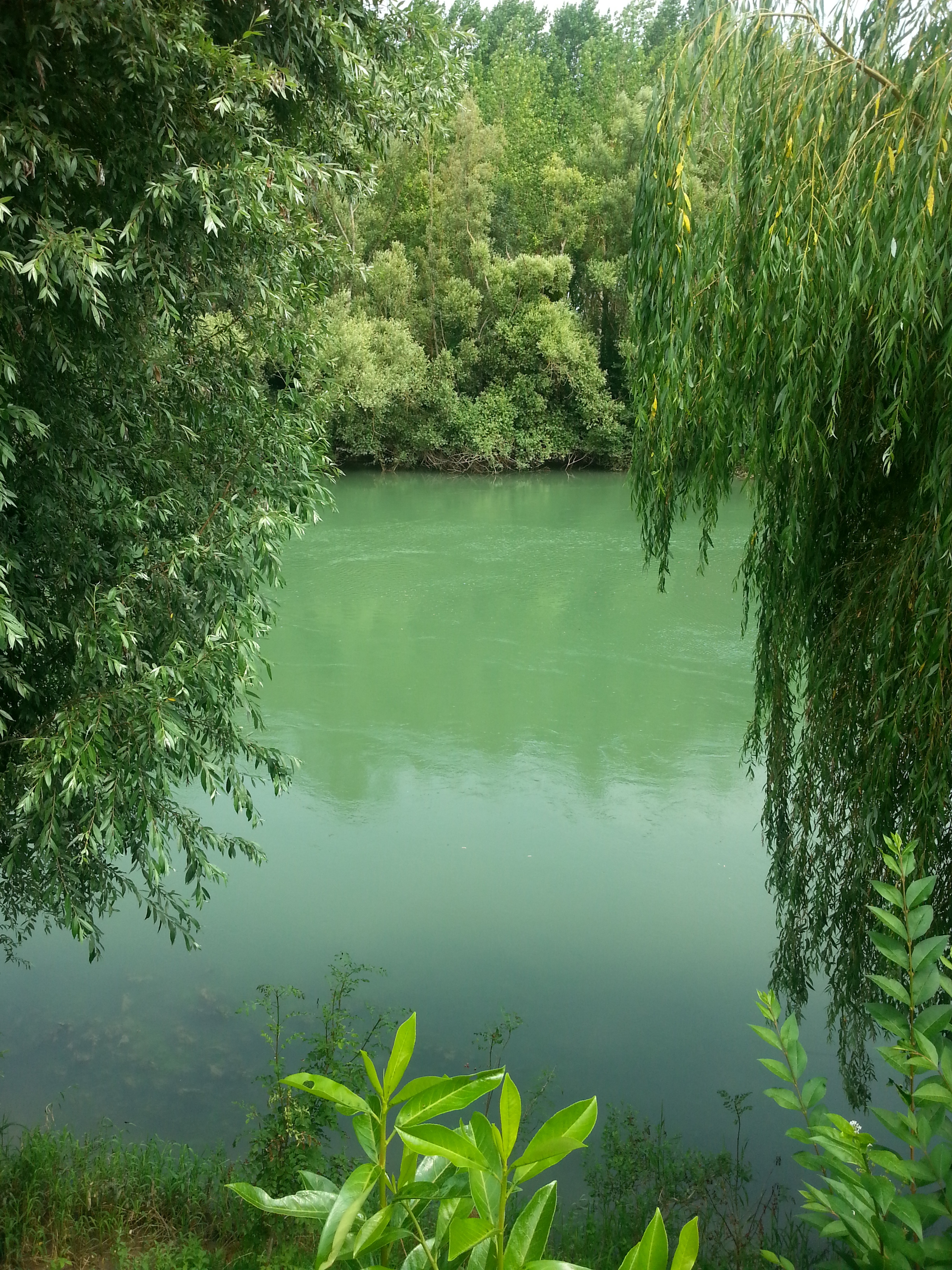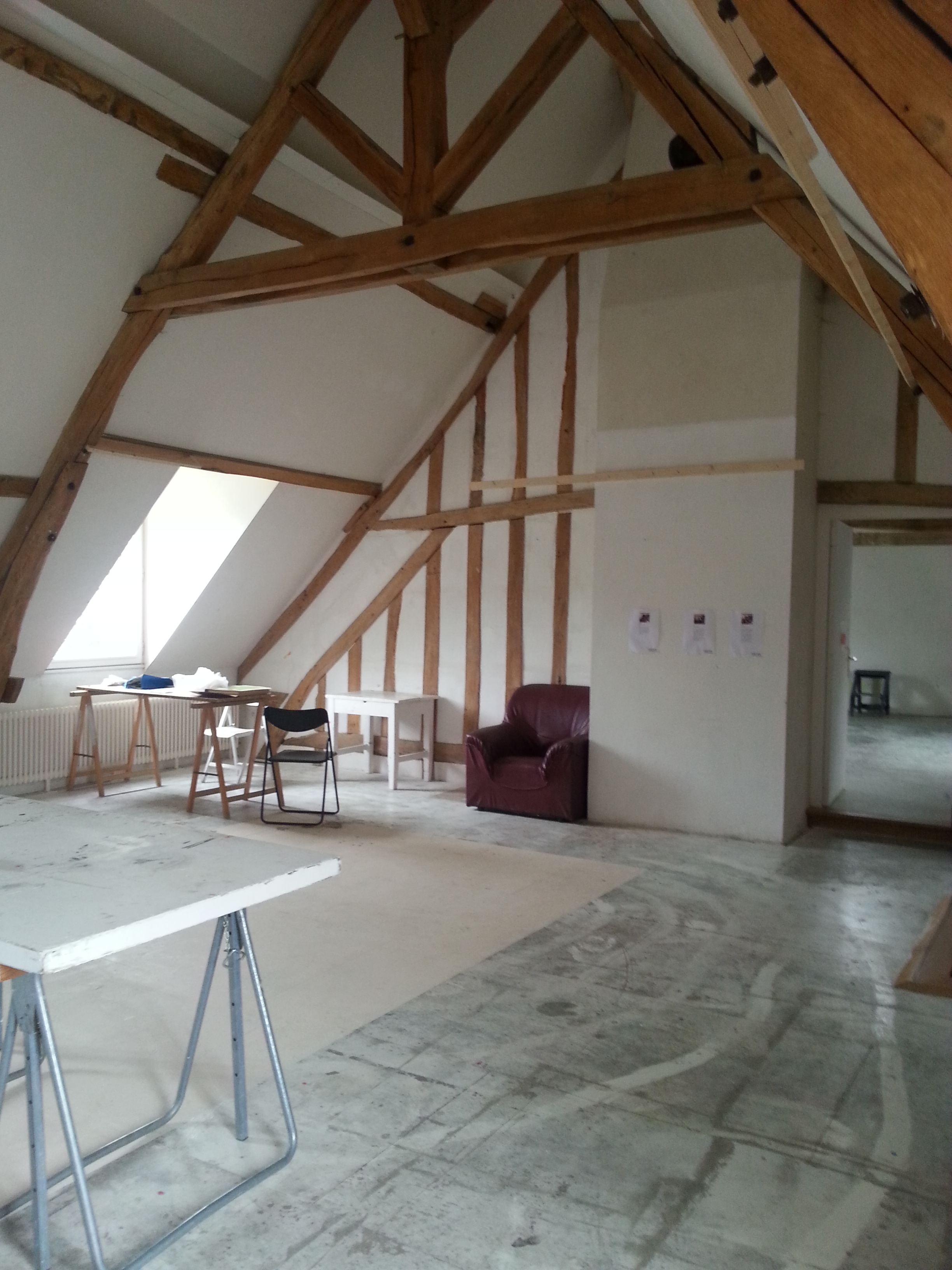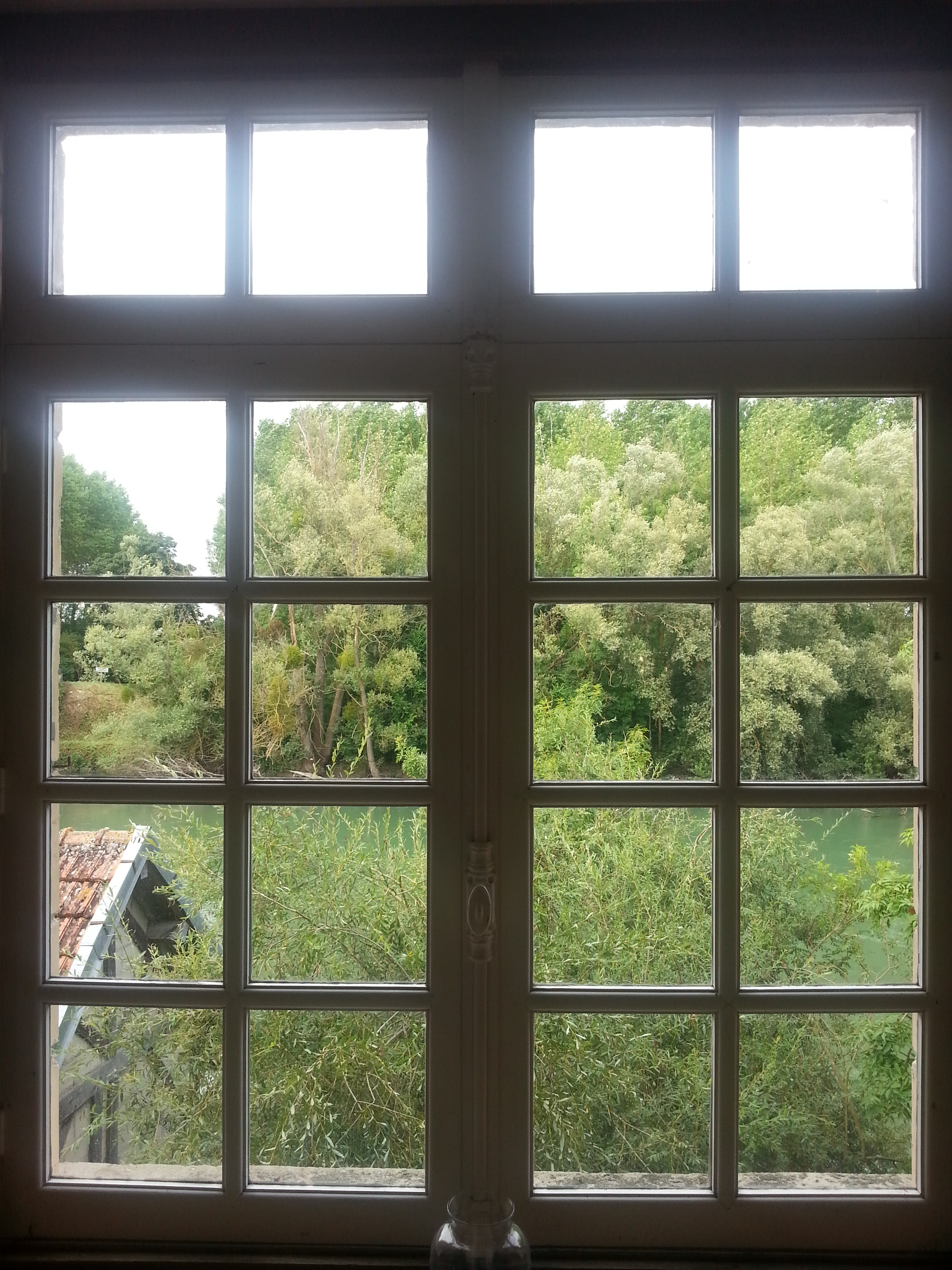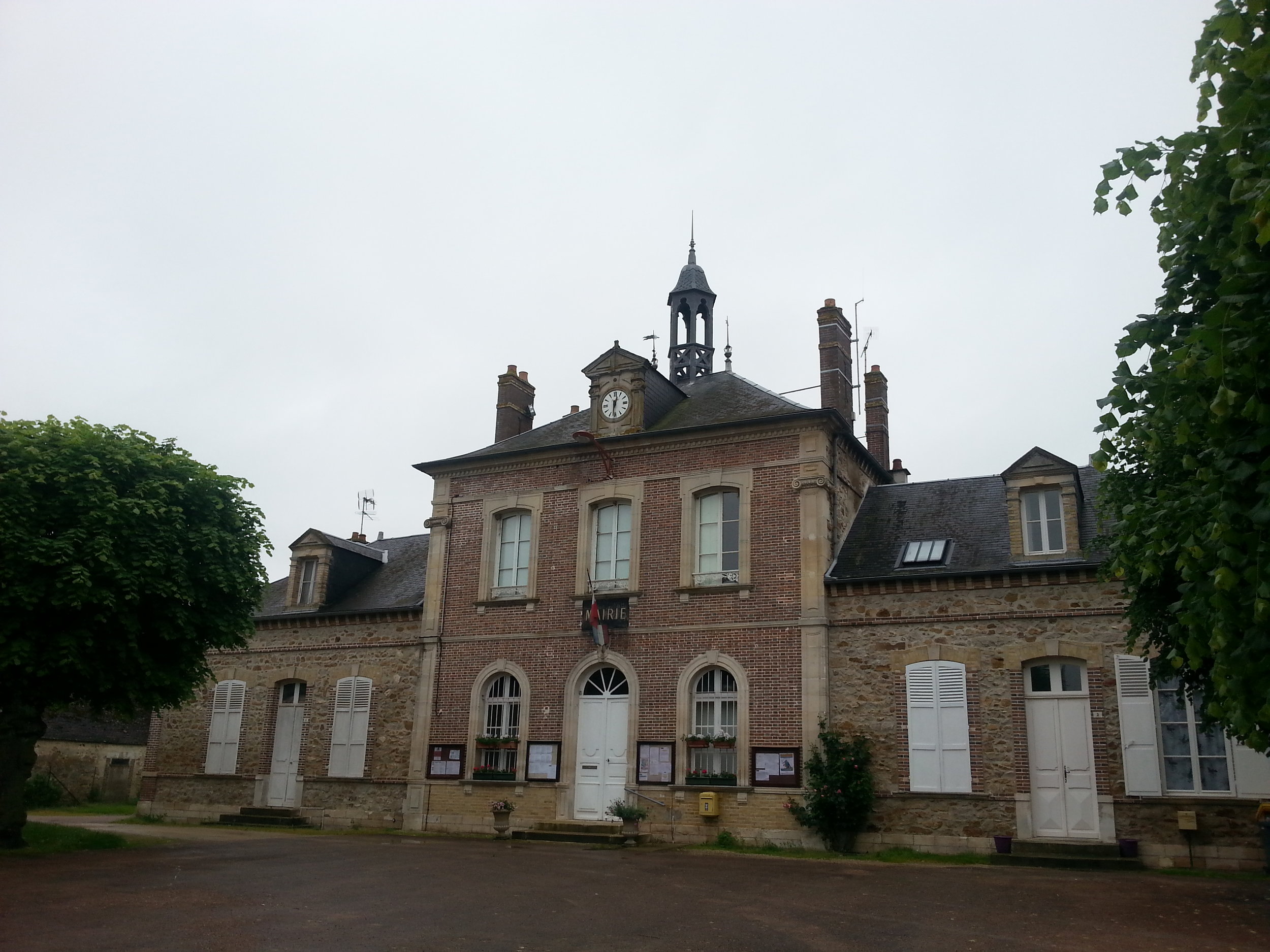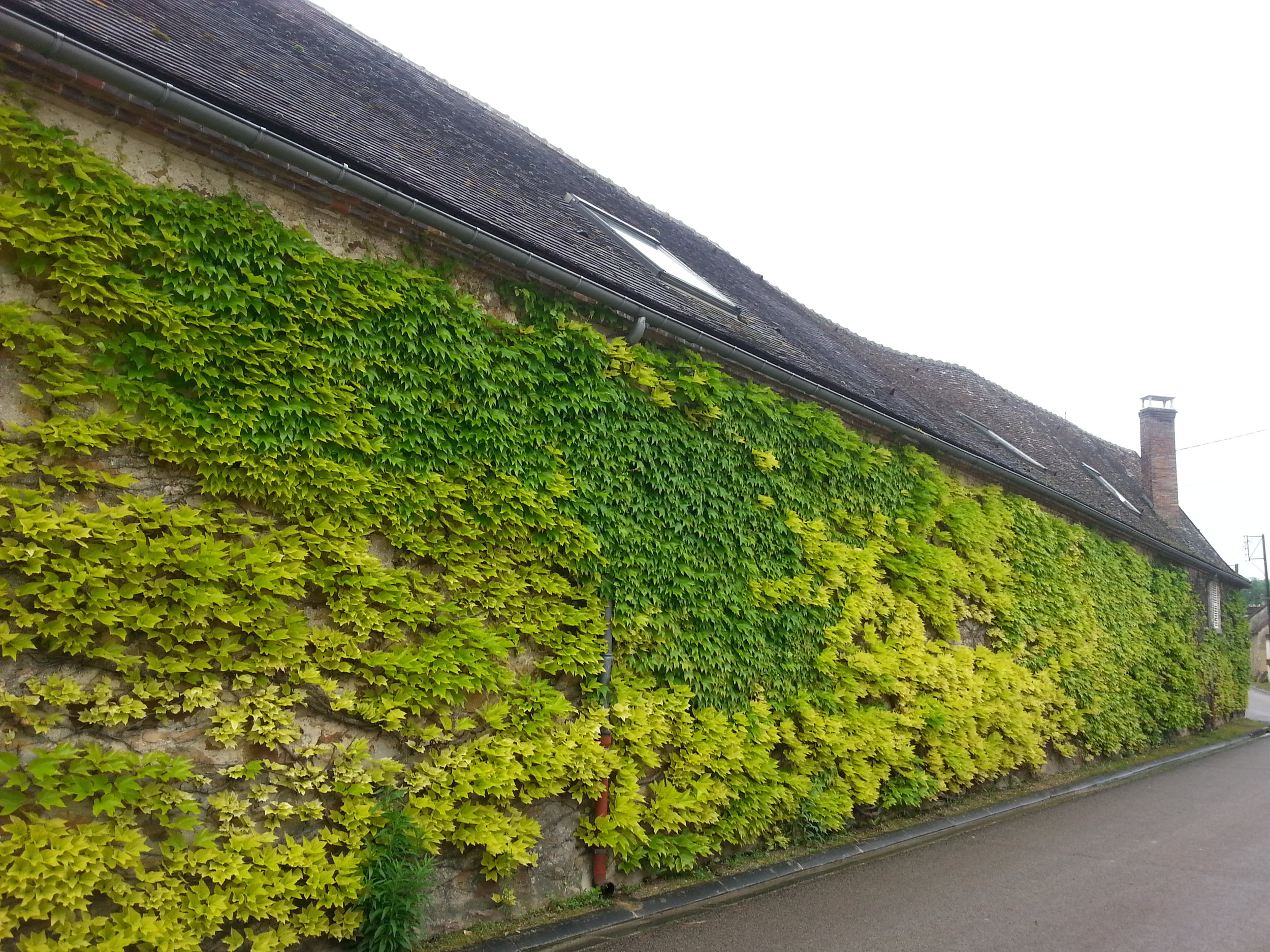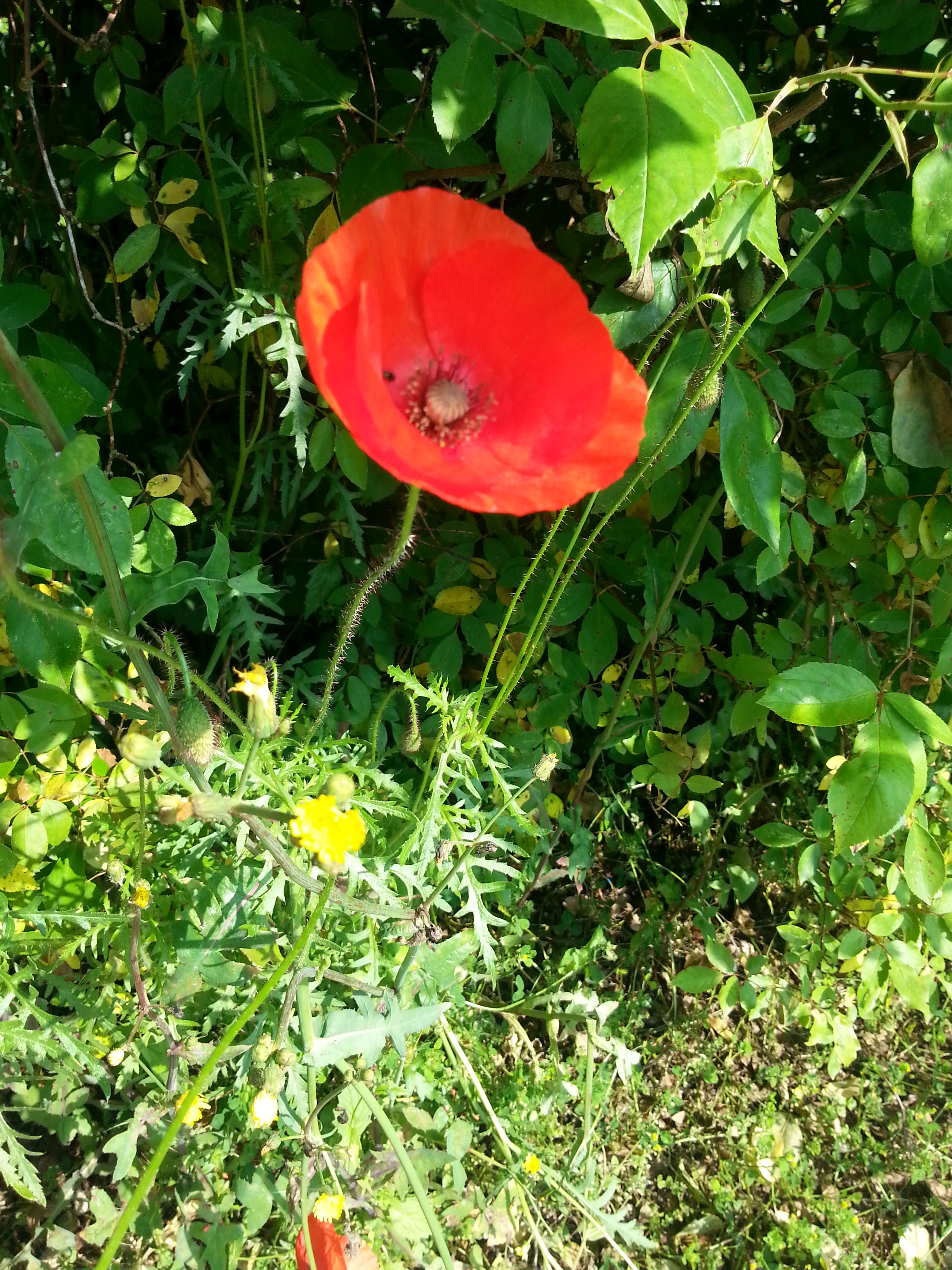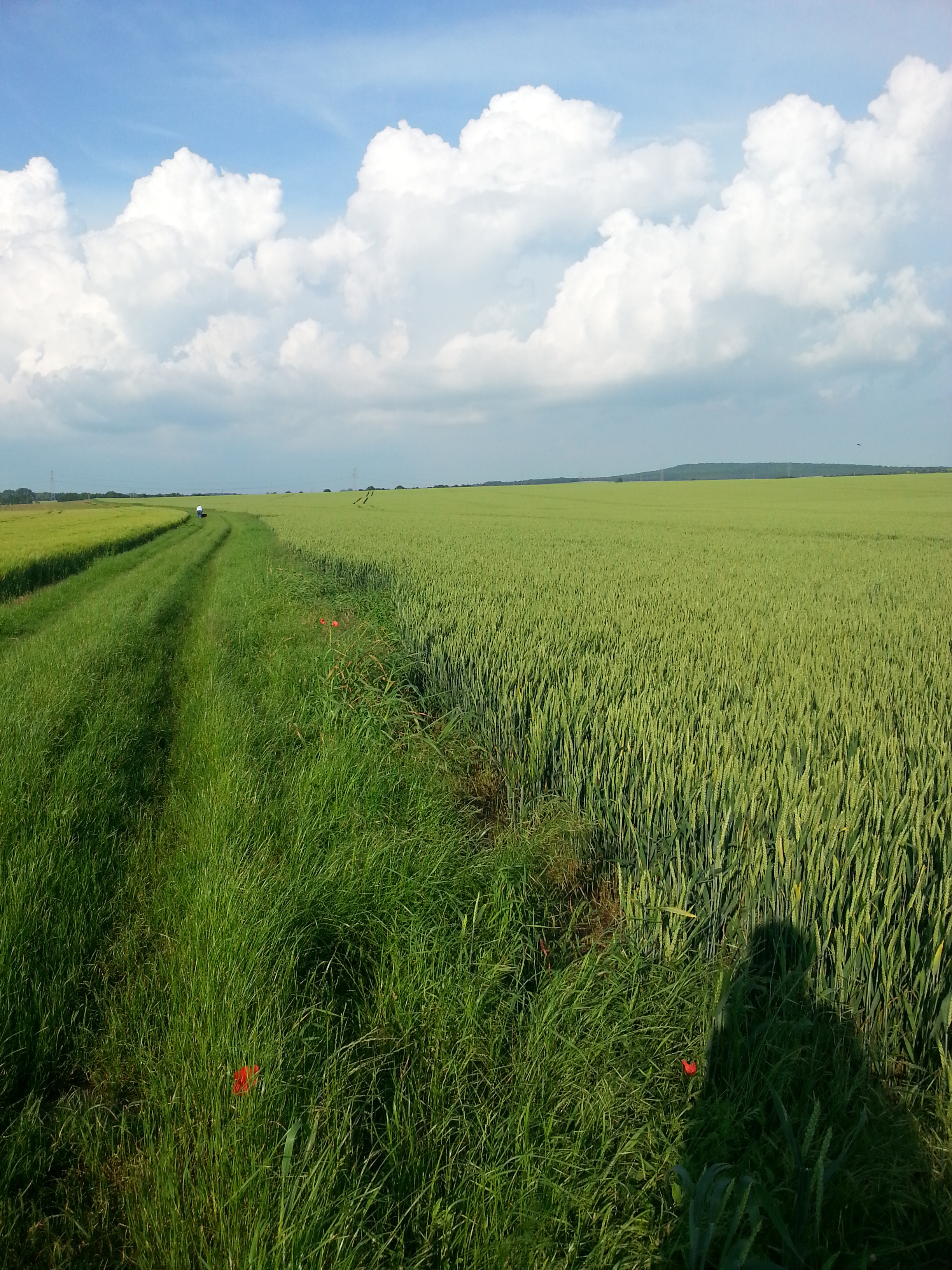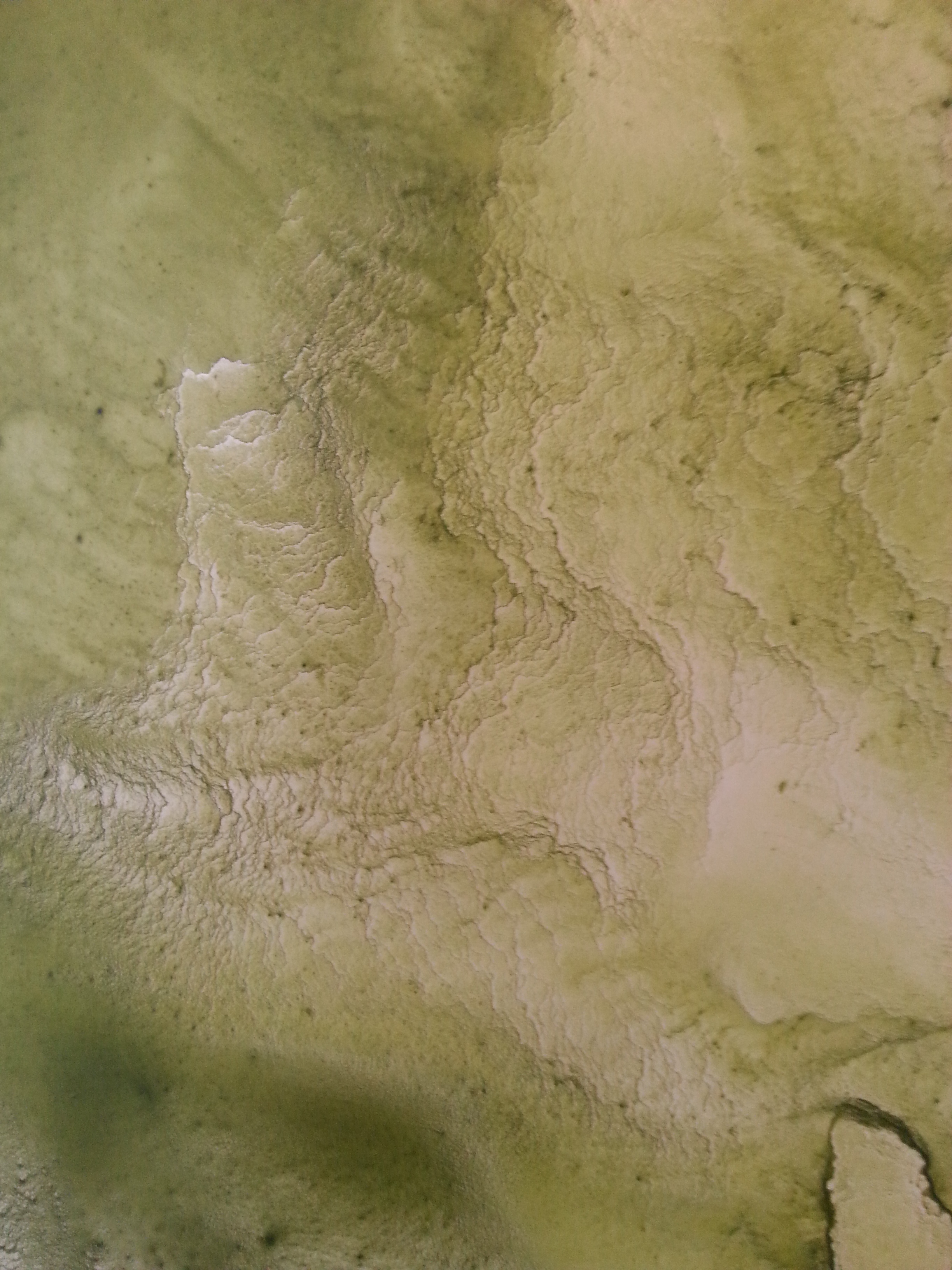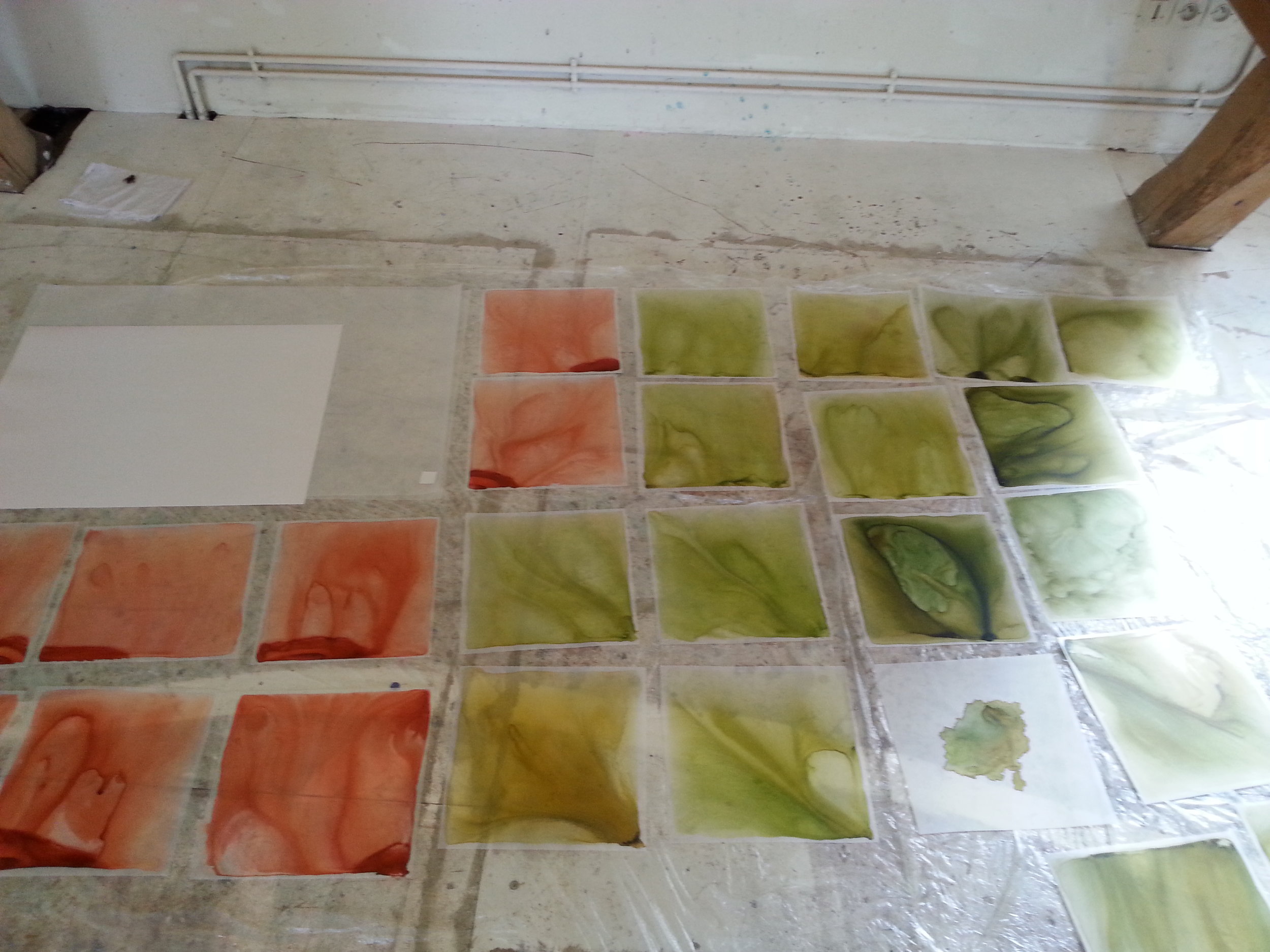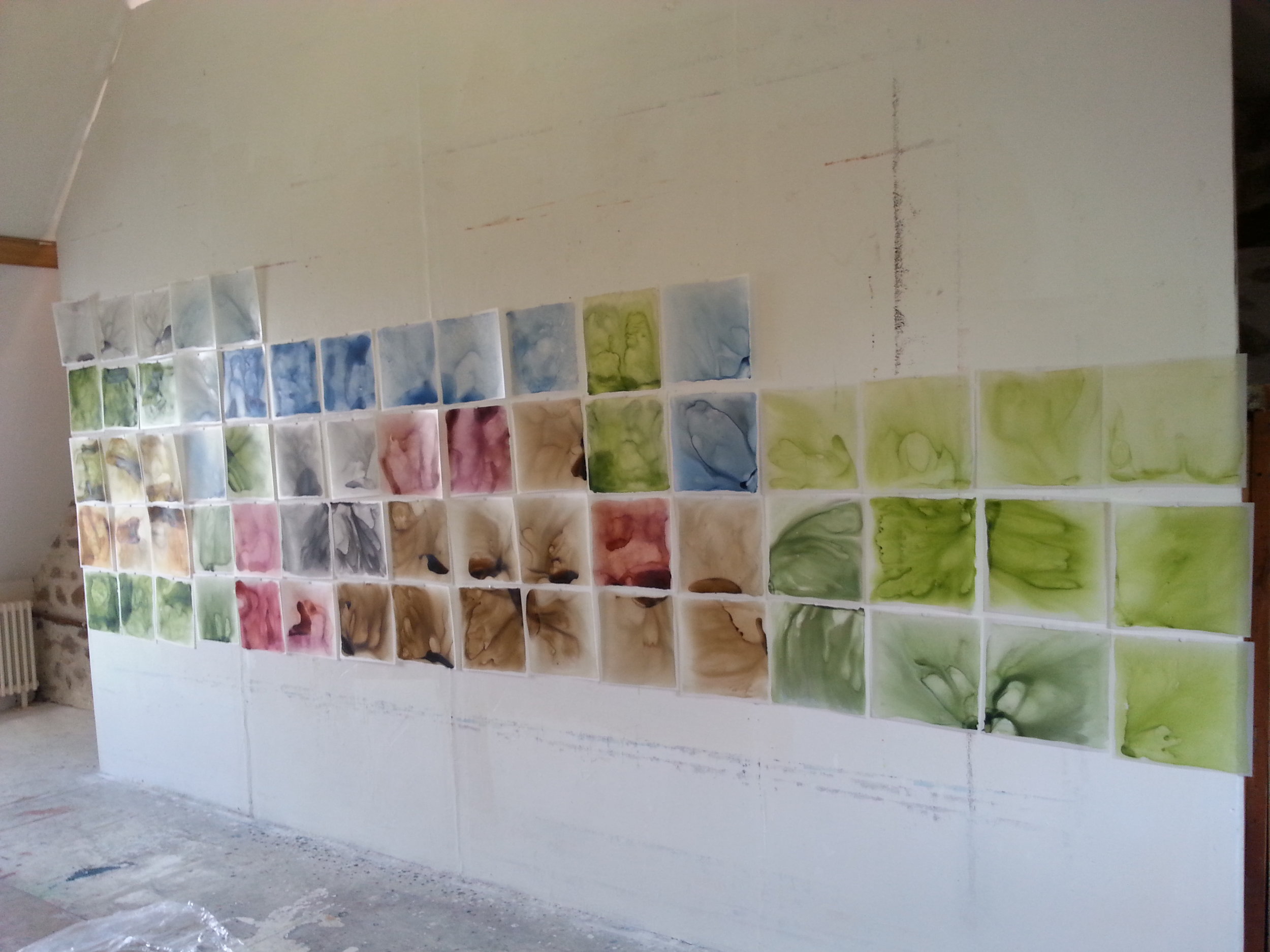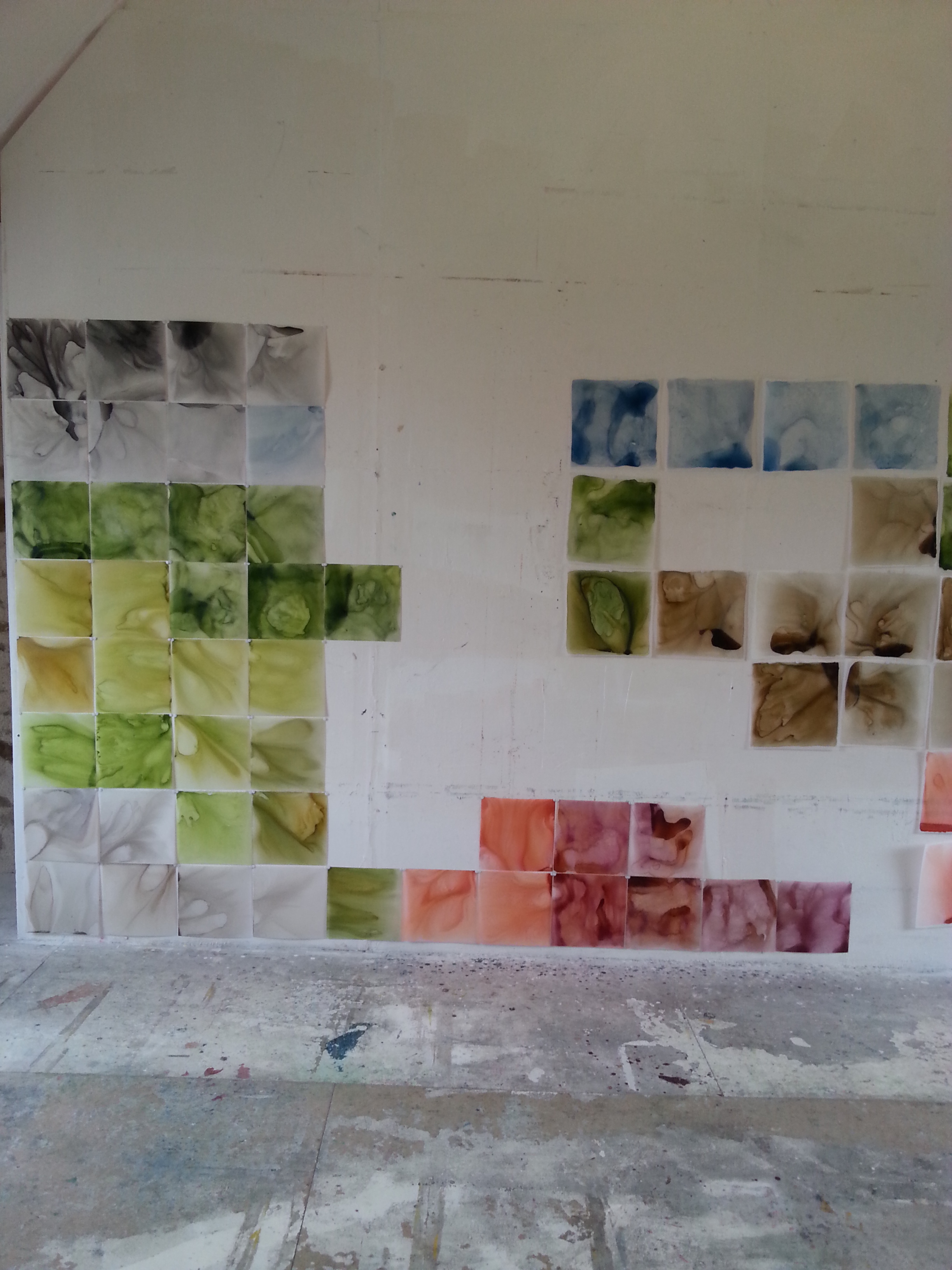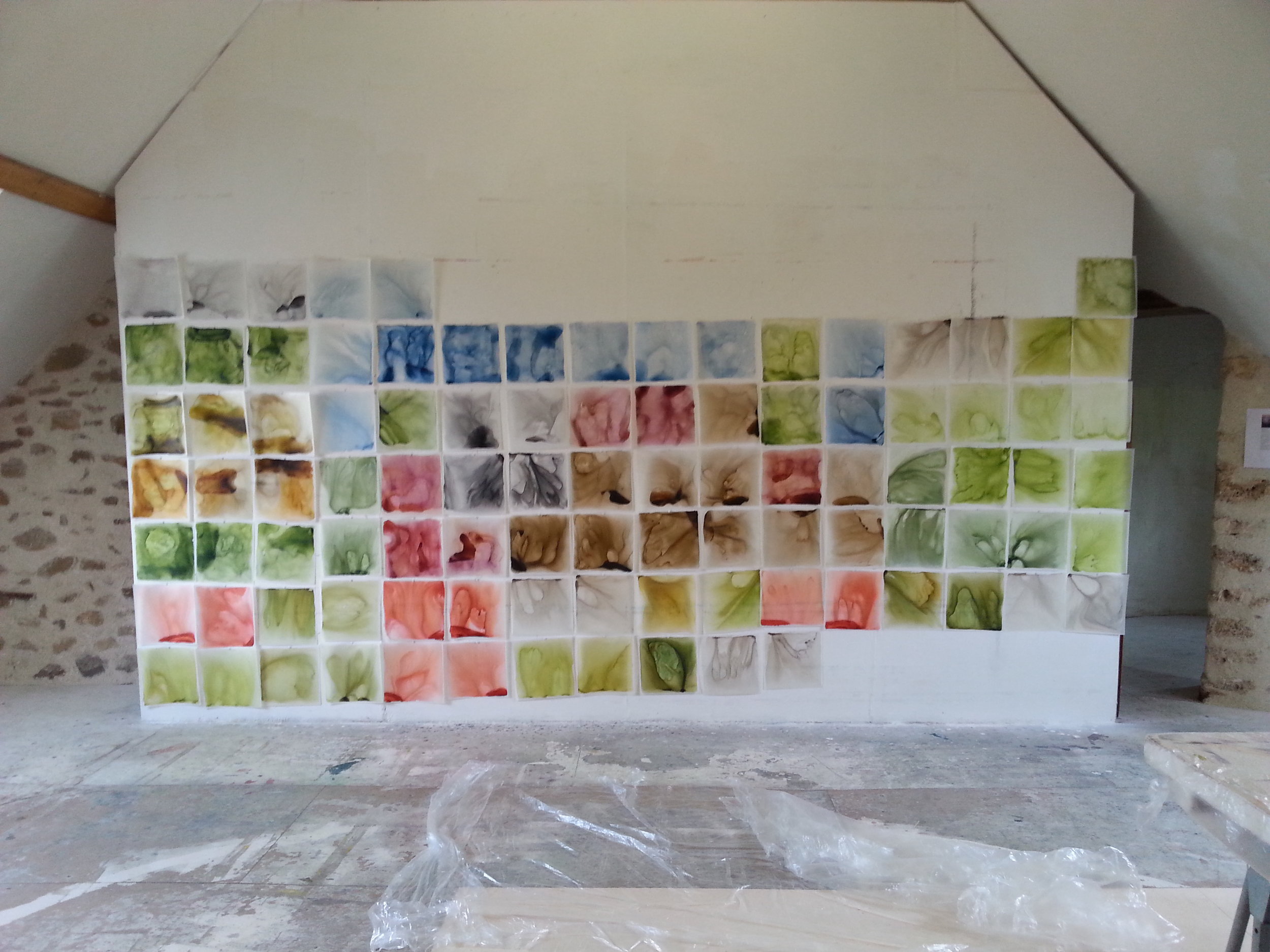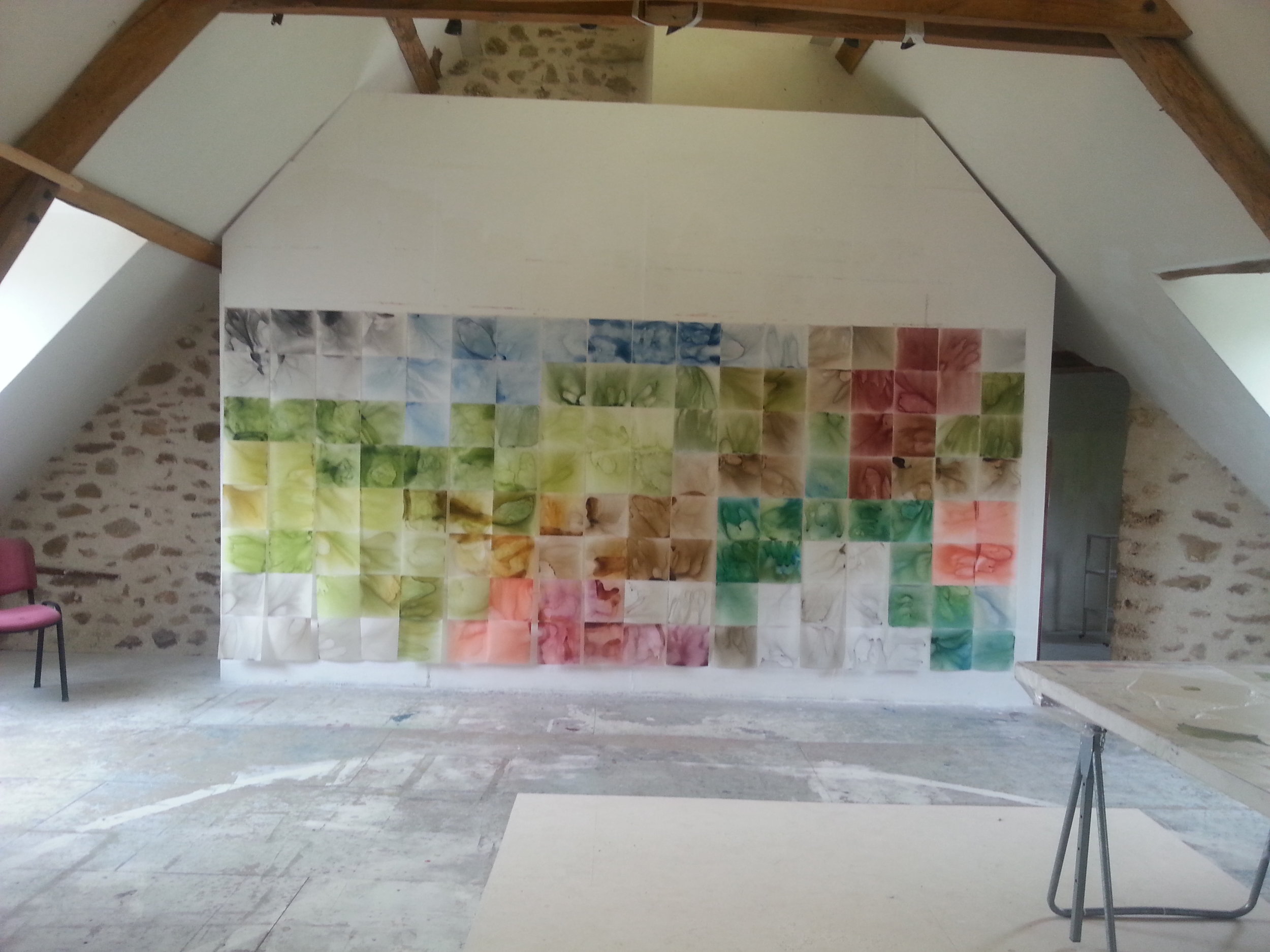I’ve gone a year without getting sick and I remember in horror the city where I touched everything. So much pushing and grasping of tickets and gates and latches and buzzers and chairs and rails and doors. Two bisous for every acquaintance—and four for your dad—and my glasses collide with all of them. Every step is a chance encounter with gum and cigarettes: wet, white, spat-out vices. Contents of pockets are leaked into chairs. We could be suffocated by the intimations of mouths and hands. Ça me dégoûte; ça me plaît.
Process
Process: Marnay /
Marnay, 200" x 80", acrylic ink on polypropylene, 2016.
Marnay, the piece pictured above, is one of my "atmospheric view" paintings. Totally abstract, the piece narrates what my summer in Marnay-sur-Seine, France, felt like as an immersive experience. This was a two month artist residency at the Centre d'Art Marnay Art Center (CAMAC).
Each morning, I woke early in my comfortable but cell-like room, crossed the 16th century priory through the library, and greeted the Seine on my walk to the kitchen for breakfast.
My Junes were always sweltering and oppressive, but these mornings were chilly, wet, and quiet. The Seine was murky and impatient, much like my Mississippi back home. Even when the sun reached its zenith, its rays were gentle, warming, and meek.
As the days passed, the Seine's flooding subsided, and river's sediments settled enough to restore the water to jewel-like brilliance. Wildflowers popped up in gardens and in gravel. The sun visited for longer and longer, with impressive sunsets past 9pm.
Everything about this place felt enchanting. The light felt more diffuse and sparkling. The persistent grey sky made every leaf and flower pop like an hallucination. There was nothing rugged or tough about the rural way of life-- even the cows were polite and content.
All of this went into my work. I matched my inks to what I saw-- the changing river, the plants and flowers, the cobblestones and tiles, the soil and sand-- and began to piece together how it feels to be wrapped up in all of these sensations at once.
The lightweight Yupo-- which I bought specifically to be plane-friendly-- was the perfect choice for representing this place. It flutters when viewers walk past it, and there is some hint of an iridescent sheen to it, even when saturated with ink. Compared to my other atmospheric paintings, it is weightless and unabashedly colorful.
This residency had the dépaysement I was looking for. CAMAC gave me the space and time I needed to work with a clear mind, and Marnay-sur-Seine gave me a landscape unlike any I had seen before.
Cutting paper: a love story /
Of all the tactile pleasures I can think of, interacting with paper is among my favorites. Paper is as varied as food: slick-coated candied magazines, paperbacks with soft pastry pages, hot white copies sizzling with toner, tea-colored lines steeping secrets in a journal. There is no repulsive paper.
I spent years drawing, folding, writing, painting, rolling, and preserving paper before it ever really occurred to me to cut. In graduate school I eagerly signed up for Art of the Book. Cutting signatures and stitching bindings was worth the cold reality of 8 am class. One of our first lessons was how to make a simple 16-page accordion book out of one sheet of paper.
That did me in. A single page was transformed into a book with a few folds and snips. It's not the most elegant kind of book, but this change into a new object had me hooked. What else could be done with a single sheet?
I can't remember the guidelines for our first project, but I could not let go of the idea of the single sheet transformed. I wanted to go beyond making content with pencil or ink. The pages alone had to carry their weight. So, I cut into them.
To express something big in a modest project, I chose to illustrate the use of paper across continents and time. Of course, this is an extremely long and varied history-- far too complex to really explain in a picture book-- so I picked four places to highlight.
After folding and cutting a sheet of drawing paper into the accordion book, I found that the structure of the paper would allow me four two-page layouts. Rather than pack in eight places with questionable identity, I chose to work in the style and language the paper was used for.
A real historian of paper might have some advice on locations, and native readers of Mandarin and Arabic may have some corrections for me, but I was more concerned with my due date. The four places I settled on were China, Iran, Germany, and the United States. The written titles are a bit more generic: I opted for something like "the Islamic world," as well as Europe and America.
It's not a perfect project by any means, but unpacking it recently was a welcome surprise. It's a clear link between my past and current work. I did a few other projects where I cut my own drawings, but doing this piece ultimately led me to cutting up maps to explore my biggest obsession-- the human experience of place. Erasure by knife and the transformation of the object created a huge breakthrough for me, and over 100 X-Acto blades later, I'm still making discoveries with it. I'm excited to see what comes next.
